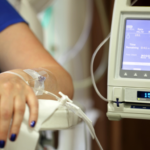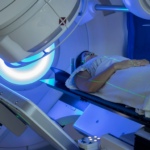
Breast cancer is a form of cancer that arises in the cells of the breast. It is the most frequent cancer in women globally, but it can also occur in men. The actual aetiology of breast cancer is unknown, although some risk factors can raise a person’s chances of developing the disease. These risk factors include age, family history, genetic mutations, hormone variables, and lifestyle factors such as alcohol consumption and obesity. Breast cancer symptoms include a lump or thickening in the breast, changes in the size or form of the breast, nipple discharge or inversion, and skin changes such as dimpling or redness. Breast cancer is generally diagnosed via imaging testing.
Breast cancer is one of the most common cancers in women around the world. It is a form of cancer that occurs in the breast tissue, most commonly in the milk ducts or lobules. Breast cancer, like most cancers, is staged based on tumour size and the extent to which it has spread to other parts of the body. Understanding the various phases of breast cancer is critical for optimal therapy and management.
1 ) Stage 0 Breast Cancer – breast cancer, also known as non-invasive breast cancer, is the earliest stage of breast cancer where the cancer cells have not yet spread to surrounding breast tissue. It is classified into two subtypes: ductal carcinoma in situ (DCIS) and lobular carcinoma in situ (LCIS). DCIS is the most common subtype and develops in the milk ducts of the breast, while LCIS develops in the breast lobules. Both subtypes are considered precancerous disorders and the cancer cells remain contained within the ducts or lobules and have not spread to other areas of the breast.
Treatment – Surgery is commonly used to treat stage 0 breast cancer by removing the affected breast tissue. Radiation therapy may be used after surgery to eliminate any remaining cancer cells. Hormone therapy is another option to prevent cancer from recurring.
2 ) Stage I Breast Cancer – Breast cancer in stage I is a locally limited cancer, meaning it has not progressed to the lymph nodes or other organs. The tumour in stage I breast cancer is tiny and easily treatable. Two further subtypes, IA and IB, are distinguished from stage I breast cancer.
Breast cancer that is at stage IA has a tumour that is no larger than 2 centimetres and has not yet spread to the lymph nodes. Breast cancer that is in stage IB has a tumour that is 2 to 5 centimetres in diameter or may have tiny cancer cell clusters in the lymph nodes close to the breast.
Treatment – Surgery to remove the tumour is typically followed by radiation therapy to eradicate any leftover cancer cells in stage I breast cancer. Depending on the tumour’s features, hormone therapy or chemotherapy may also be advised.
3 ) Stage II Breast Cancer – Breast cancer in stage II is also localized cancer, which means it has not spread to other bodily regions. However, compared to stage I breast cancer, the tumour is larger, and there may also be cancerous cells in the lymph nodes close to the breast. The two subtypes of stage II breast cancer are IIA and IIB.
A tumour in stage IIA breast cancer has one of two sizes: either it is larger than 2 centimetres but smaller than or equal to 5 centimetres migrated to the lymph nodes. When breast cancer is in stage IIB, the tumour is larger than 5 centimetres, has progressed to the lymph nodes under the arm, or is locally advanced, which means it has encroached on the chest wall or the breast, and it has spread to the lymph nodes beneath the arm, or it is larger than 5 centimetres but has not surfaced.
Treatment – Stage II breast cancer is often treated with surgery to remove the tumour and radiation therapy to eradicate any leftover cancer cells. Depending on the traits of the tumour, chemotherapy, and hormone therapy may also be advised.
4 ) Stage III Breast Cancer – Stage III breast cancer is an advanced form of the disease that has spread to the tissues and/or lymph nodes in the area but has not yet reached other body organs. Its three kinds (IIIA, IIIB, and IIIC) are categorized according to the size of the tumour and the quantity and distribution of the lymph nodes that are affected.
Stage IIIA tumours measure more than 5 centimetres in diameter and may have reached up to 9 lymph nodes beneath the arm. In stage IIIB, the tumour has advanced to more than nine lymph nodes under the arm, to lymph nodes close to the breastbone or collarbone, or to the surface of the breast, resulting in swelling or ulcers. Breast cancer in stage IIIC occurs when the tumour has migrated to the lymph nodes near the neck or underarm, as well as the lymph nodes above or below the collarbone. Oedema or breast or chest ulcerations may also result from it.
Treatment – Surgery, radiation therapy, chemotherapy, and hormone therapy are frequently used in the treatment of stage III breast cancer. The purpose of treatment is to reduce the size of the tumour, eradicate any cancer cells that may still be present, and stop the cancer from progressing.
5 ) Stage IV Breast Cancer – The most advanced stage of breast cancer is stage IV, which indicates that the disease has migrated to the bones, lungs, liver, or brain. Metastatic breast cancer is another name for stage IV breast cancer.
Treatment – Chemotherapy, radiation therapy, hormone therapy, and targeted therapy are frequently used in the treatment of stage IV breast cancer. The purpose of treatment is to lessen symptoms, stop the spread of cancer, and enhance the quality of life.
Conclusion – In conclusion, breast cancer is a serious disease that requires early detection and proper treatment for effective management. Cancer Care Pune is a leading cancer care centre in Pune that offers comprehensive services for breast cancer patients, including diagnosis, treatment, and support. The centre’s team of highly skilled and experienced oncologists, led by Dr Jagdish Shinde, uses the latest technology and techniques to provide personalized care to each patient. If you or someone you know has been diagnosed with breast cancer, seeking medical attention at Cancer Care Pune can significantly improve the chances of successful treatment and long-term recovery.




